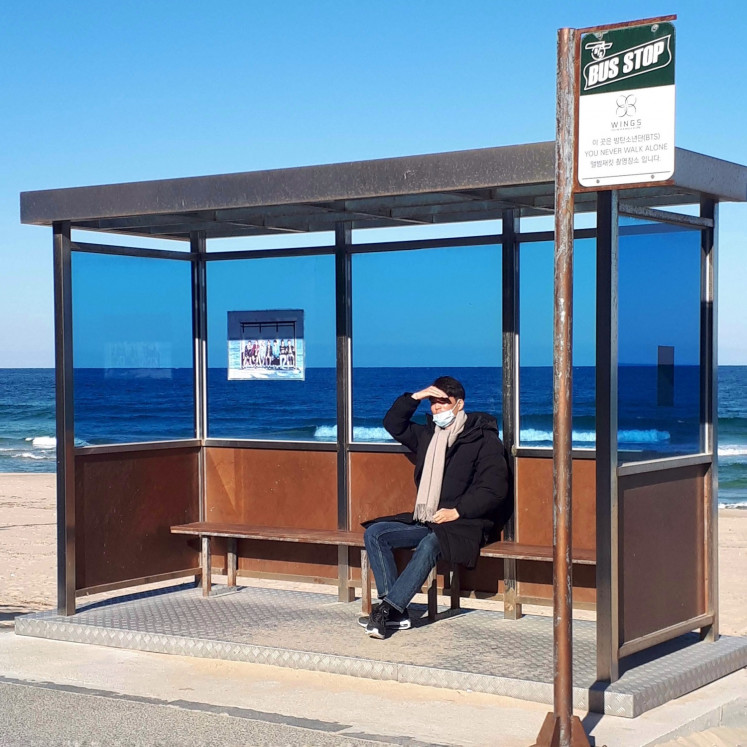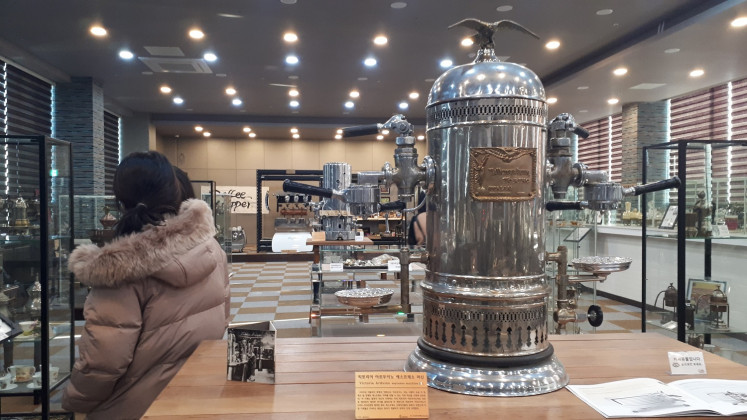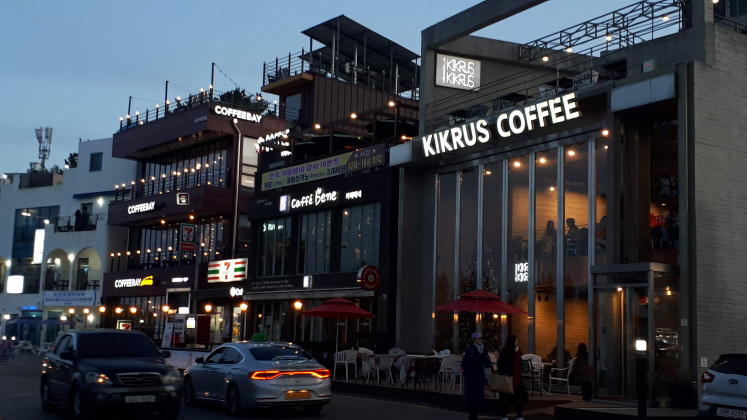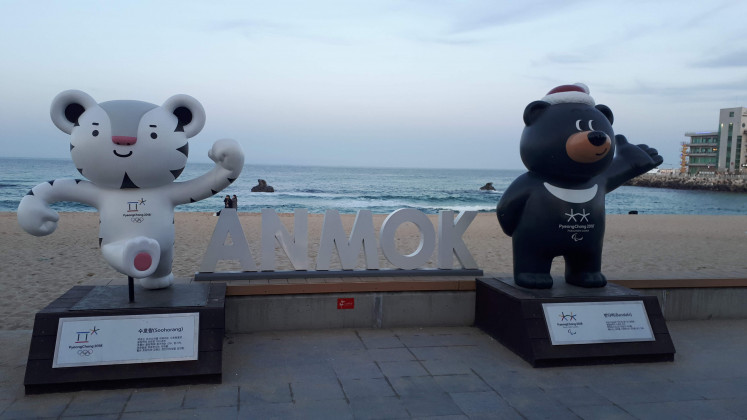Popular Reads
Top Results
Can't find what you're looking for?
View all search resultsPopular Reads
Top Results
Can't find what you're looking for?
View all search resultsSeaside cup of joe: How a small city became South Korea’s coffee central
A look at South Korea's Gangneung city, known to be the birthplace for the country’s artisan coffee culture.
Change text size
Gift Premium Articles
to Anyone
A
bout 150 kilometers from the bustling capital of Seoul, a city on the east coast of South Korea is making its mark as the nation’s coffee hub.
Gangneung city in Gangwon province is known as the birthplace of the country’s artisan coffee culture, with local cafés serving a worldwide variation of Arabica and specialty coffee selections.
We arrived in Gangneung in the late afternoon after a hearty lunch of grilled marinated squid. Before getting a sip of coffee, we took a walk along Jumunjin Beach, a local landmark after the popular Korean idol group BTS shot their "Spring Day" video there. The local government rebuilt a replica of the original bus stop used in the video in 2018 to attract tourists.
A man sits in a replica of a bus stop used for the shoot of BTS' music video "Spring Day" at Jumunjin Beach, South Korea. (JP/Eisya Eloksari)During winter when we were there, the beach was quiet with only a few couples taking pictures along the shore. However, our tour guide Mi Jin “MJ “Yang said that during summer, from June to August, the place was packed with surfers.
“This beach faces the Sea of Japan. It is more ideal for surfing than the west coast area,” she said during our walk past a restaurant where surfboards were lined up.
Our second stop was Coffee Cupper, a museum and café displaying antique coffee-making equipment from the 17th century, from espresso machines to silverware from which to drink coffee. While the café is located on the ground floor, its third and fifth floors serve as the museum.
An espresso machine is displayed at the Coffee Cupper museum in Gangneung. (JP/Eisya Eloksari)Afterward, we went to the first floor where our tour manager had arranged for a pour-over lesson for groups. Individual tourists can opt for a coffee tasting course starting from 8,000 won (US$6.90) to 13,000 won to try three coffee varieties.
The café serves Indonesian Mendheling coffee, Hawaiian Kona and Panama Geisha – the popularity of which has soared in recent years. It also offers desserts that go along with coffee such as Swiss rolls and cakes.
Fueled by the warmth of the coffee, we walked to Anmok Beach where Gangneung coffee street is located. The street just off the shoreline is the focal point of the area in which dozens of cafés are located.
We went through a narrow alley filled with walls of coffee beans, fish and sunset paintings, all icons of the coastline city. I could smell the fragrance of freshly ground coffee beans and dried fish from residents’ backyards almost side-by-side.
As we approached the beach, I felt the cold winter weather paired with the sea's evening breeze. I walked along the side of the road nearest to the sand, and to my right was multiple-story local café chains that had turned on their back store signs.
“Big coffee shop franchises such as Starbucks are also coming in,” said MJ.
While it is common to see Starbucks in big cities and at almost every office building back home in Jakarta, seeing one on the side of a beach in a small city of about 200,000 people was certainly a first for me.
Some claim that the caffeine craze swept the nation in 1999, when the first Starbucks opened its doors in Seoul. However, MJ said the city’s coffee scene began taking shape after one of South Korea’s first baristas, Park Yi-chu, moved to Gangneung in the early 2000s from Seoul. He opened up a café, which later inspired other people to learn the art of coffee roasting and brewing.
The Anmok street used to be filled with coffee vending machines. Couples would go on dates along the beach with a can of Nescafe in their hands. As coffee houses started to emerge, they preferred to have a sit-down place and cafés started to gain popularity in the area.
Soon afterward, and much like the rest of the world, the demand for specialty and Arabica coffee replaced the country’s craving for instant and canned coffee.
Local coffee shops along Gangneung coffee street across from Anmok Beach. (JP/Eisya Eloksari) An Anmok Beach sign featuring mascots from the 2018 Winter Olympics in neighboring Pyeongchang county. (JP/Eisya Eloksari)“Gangneung has its own coffee farm,” MJ told me, referring to Coffee Cupper Coffee Farm on the foothills of Daegwallyeong, home to the oldest coffee tree in Korea. “Although it is very small, since the Korean weather does not support coffee tree growth.”
South Korea is not a coffee-producing country, however, its adults consumed on average 353 cups of coffee per person in 2018, higher than the global average of 132 cups per capita in the same year, according to The Korea Herald.
According to South Korean Small Enterprises and Market Service data, there were 78,846 coffee shops by the end of 2018. The nation’s coffee market also stood at 11.7 trillion won in 2017, more than threefold from the around 3 trillion won a decade ago.
The city also holds an annual Coffee Festival every October. First established in 2009, the festival offers coffee tasting from local and national shops, musical performances and talks on the coffee business.
To get to Gangneung city, visitors can take the KTX train or a bus or drive from Seoul, which takes two-and-a-half-hours. (wng)
------
The Korean Tourism Organization (KTO) invited several Asian media including The Jakarta Post to visit South Korea from Jan. 14 to 18.











